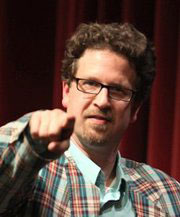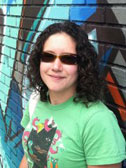The most intriguing education panel during SXSWedu (which will also be presented during SXSW Interactive) in March 2012 just might be Supersizing the Classroom: 3000 Students & Beyond with Virginia Tech’s John Boyer and Katie Pritchard.

For years Boyer’s highly popular Geography 1014 World Regions class kept outgrowing every classroom space due to student word-of-mouth recommendations. For several years even the largest classroom on campus, which held 585 students, was insufficient. After 3000 students were turned away one year, Boyer persuaded the university to let him use a hall normally used for large events. For the past three years he has taught classes of some 3000 students at a time on Monday nights.

Boyer’s dramatic flair, offbeat humor, and quirky re-enactments are a key component of his popularity. So too are video podcasts, some featuring superhero (and Boyer’s alter ego), the Plaid Avenger (viewable at www.plaidavenger.com), and a wide variety of social media tools. Despite the size of Boyer’s megaclass, he makes each lecture session interactive.
From online comments, the book appears to be unusually successful at capturing and holding students’ interest.

Boyer, 42, emphasizes current events and their roots in “geographic,historic, environmental, demographic, religious and economic characteristics of various areas of the world,” as the course description for the undergraduate survey course puts it, because students typically have major gaps and very little context for making sense of international conflict.
His full-time technical assistant, Katie Pritchard, a former Virginia Tech student, continually seeks new technical tools to help him make the class even better. Boyer credits Pritchard with pushing him to adopt social media and interactive methods when she was his student.
Besides Pritchard’s help, Boyer has the services of three graduate assistants in order to make the class work. Contrary to what one would think, grading is not at all limited to scannable multiple-choice tests. He and Pritchard have developed an innovation they call flash quizzes, a spinoff of the flash mob. He also offers a variety of opportunities for students to research and write.

One of the most unusual may be the Twitter accounts of fictional versions of world political and religious leaders, updated daily by students who have to be familiar with their person’s daily schedule and lives. When the real person has activities with another leader, the alter egos exchange tweets about events. If you have a Twitter account, you can check out the tweets of Plaid_Obama, Plaid_Putin, Plaid_Pope, and a host of other leaders on the world stage (not to mention the Plaid Avenger himself) – or follow the tweets of the whole class at #wrvt.
Boyer tries hard to respond to each Facebook message, email, or tweet he receives from students. He acknowledges that it can occasionally be a little overwhelming with 3000 students. However he believes that embracing all the ways of communicating using Facebook, Twitter, or other social media actually makes his job easier. That job is ensuring that his students understand world events and their complex causes.
He knows older professors who just consider Twitter a waste of time, but he wonders, “Would you – in class – if you had 30 students asking you questions,would you think that’s a waste of time?” To Boyer, there is no difference between traditional means of interacting and digital means.
“The future of education, I think, is going to be building communities in the classroom,” Boyer said during our Skype interview. The vision he and Pritchard have for the class is to get his students interacting and taking responsibility for learning and communicating.
The old model, which is quickly becoming outdated according to Boyer, resembled a learned teacher on a mountain tossing tidbits of knowledge down to students, who individually had to try to scale the mountain and become as knowledgeable as the professor. The new model is of a community of users who interact and are fully participatory in their own learning and that of others in the community – who help each other scale the mountain.
“The future of education, I think, is going to be building communities in the classroom.”
Boyer’s critique of most online courses is that too many stick to the traditional model, the system that has been refined in Western civilization for some 500 years. Boyer acknowledges that this new model is a lot of work, but believes the results are worth it.
Boyer is convinced that it actually takes a critical mass to create certain dynamics that make some learning possible that otherwise would not occur.
Both Boyer and Pritchard believe that anyone, no matter their individual personalities and teaching styles, can teach classes of this size – and that it is well worth doing. A superhero such as the Plaid Avenger is not required.
